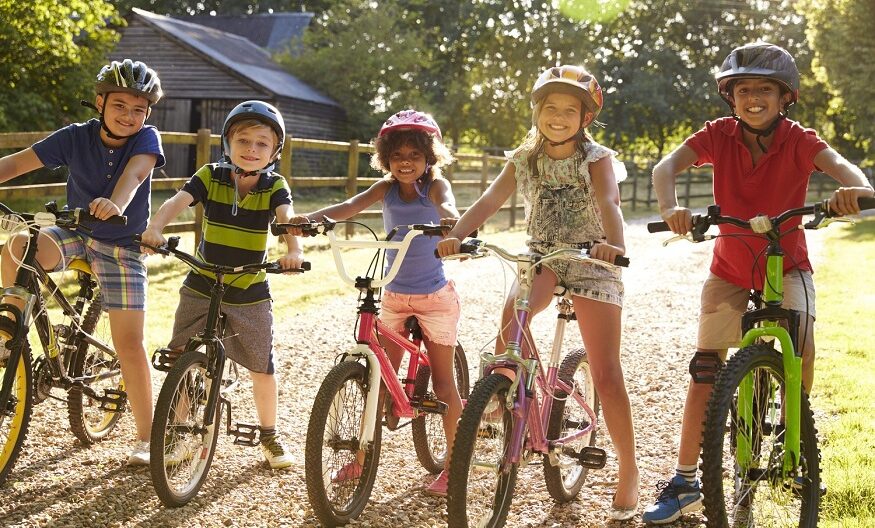
From the time children learn to walk until they get their driver’s license, the bicycle is a constant companion that allows kids to explore independence and the world around them. Choosing the right bike for each stage of development is crucial to ensure children’s safety and help build their confidence and skills.
Toddling Tots: Balance Bikes and Tricycles
As soon as toddlers gain their footing, parents can introduce ride-on toys to hone balance and coordination. Around 12-18 months, balance bikes with no pedals allow toddlers to push themselves along using their feet. There are many excellent starter balance bikes with lightweight frames and adjustable seat heights. Tricycles offer stability with three wheels, and parent-controlled push trikes allow adults to navigate while children focus on steering. Once balance and steering skills improve, toddlers will feel ready to graduate to a pedal bike, usually between ages 3 and 4.
Pedal Power: Kid-Sized Bikes with Training Wheels
Pedal bikes mark an exciting milestone as kids shift into their preschool years. Look for bikes with proportionately smaller frames sized 12 to 16 inches for the average 3- to 5-year-old. Training wheels provide temporary stability as children learn to pedal and balance simultaneously. Allowing kids to practice on smooth, flat surfaces like sidewalks minimizes frustration. Once able to balance for extended periods, the training wheels can be removed, a pivotal achievement on the path to bike independence. Coaster brakes offer simpler stopping power by pedaling backward.
Gaining Speed: Kid-Sized Bikes with Handbrakes
By age 5 or 6, many kids have mastered pedaling and balancing well enough to upgrade to their first handbrake bike. This important milestone allows children to control braking and further hone their bike handling abilities. Look for kids’ bikes with handbrakes sized 16 to 20 inches for the average 5- to 8-year-old. Single speed drivetrains keep things simple, while wider tires provide stability and durability on varied terrain. Training wheel mounts allow continued use if needed. Cycling shorts with padded seats boost comfort during longer rides.
Off-Road Adventurers: Durable Kids Mountain Bikes
As elementary schoolers grow more skilled and self-sufficient, mountain bikes open a world of off-road adventures. Mountain bikes for kids feature rugged frames, knobby tread tires, multiple gears, and handbrakes – ideal for navigating neighborhood trails, parks and dirt paths. According to the pros at Woom, these bikes provide an excellent bridge to riding more advanced adult mountain bikes in the future. Look for models with suspension forks to absorb bumps, grippy tires and 21 to 27 gear inches for ages 8 to 12. Equip young riders with helmets, gloves, and padded clothes to encourage exploration while minimizing injury.
Teen Transit: Multi-Speed Bikes for Ages 12+
By the time kids reach middle and high school, higher-end multi-speed bikes deliver versatility, performance, and freedom. These full-size bikes have 26 to 700c wheels, 14+ gear speeds, and disc brakes for advanced teen riders. Road bikes allow speed and distance for commuting and fitness. Mountain bikes take on rugged terrain with thicker tires and suspension. Hybrid bikes bridge on and off-road capabilities. Investing $300 to $1,000 provides a quality bike that will last through the teen years. Local bike shops can help fit teens to the right frame size and adjustable seat height.
Conclusion
From toddling on training wheels to cruising the neighborhood with friends, bikes provide endless opportunities for kids to explore, learn and grow. Following this guide will ensure children have the best bike match as they pedal through each stage of childhood. The sense of accomplishment when that kickstand finally comes up is a reward that will last a lifetime.
